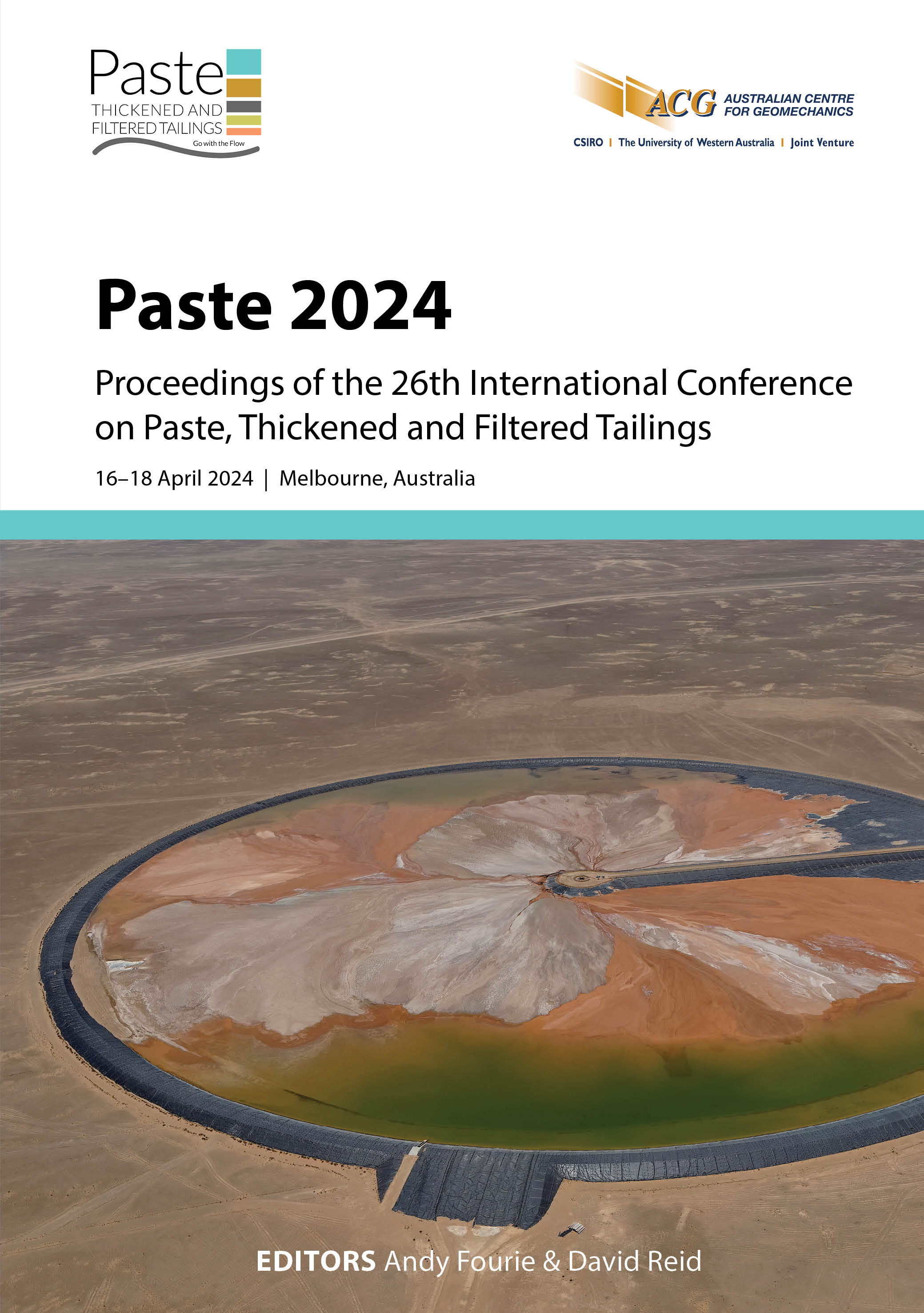Single-phase or two-phase? The impact on tailings dam breach modelling and impact assessment

|
Authors: Liu, M; Ganeson, T; Harrington, C |
DOI https://doi.org/10.36487/ACG_repo/2455_19
Cite As:
Liu, M, Ganeson, T & Harrington, C 2024, 'Single-phase or two-phase? The impact on tailings dam breach modelling and impact assessment', in AB Fourie & D Reid (eds), Paste 2024: Proceedings of the 26th International Conference on Paste, Thickened and Filtered Tailings, Australian Centre for Geomechanics, Perth, pp. 235-246, https://doi.org/10.36487/ACG_repo/2455_19
Abstract:
Historically, dam breach analysis for tailings dams with supernatant ponds has used a single-phase approach, considering the breach flow as a mix of supernatant water and tailings, both eroded and liquefied due to lateral unloading. This flow mixture is typically modelled as a non-Newtonian fluid. The rheological properties are usually defined by the average solid concentration calculated using the estimated pond and tailings discharge volumes. In contrast, the two-phase modelling approach is a newer method that treats the breach in two separate stages: the initial release of supernatant water with eroded materials forming an initial flood wave, followed by the discharge of flowable tailings from liquefaction or slumping. The latter tends to have higher solid content and consequently deposits closer to the facility. Although high density thickened tailings facilities operate with minimal supernatant water, they are usually designed with a storm storage allowance mandated by design codes. Therefore, it is necessary to assume a significant supernatant pond volume when considering flood-induced failure for this type of facility when doing dam breach analysis. For modelling assessment of the flood-induced breach, the choice between singlephase and two-phase approaches would significantly affect the modelling outcomes, as the solid content approaches that of high density thickened tailings, slight variations in solid content can lead to significant changes in the rheological properties. This paper presents a case study where both single-phase and two-phase approaches were applied to a hypothetical high density thickened tailings storage facility. The study aims to investigate the differences in modelling outcomes and their implications on the dam breach impact assessment and highlight the importance of selecting appropriate modelling approaches for this type of facility.
Keywords: tailings dam breach analysis, high density thickened tailings, two-phase, rheology, impact assessment, non-Newtonian fluid
References:
Blight, GE & Fourie, AB 2003, ‘A review of catastrophic flow failures of deposits of mine waste and municipal refuse’, Proceedings of the international conference FSM2003, Naples, pp. 1–17.
Boger, DV, Scales, PJ & Sofra, F 2006, ‘Rheological concepts’, in RJ Jewell & AB Fourie (eds), Paste and Thickened Tailings – A Guide, 2nd edn, Australian Centre for Geomechanics, Perth.
Canadian Dam Association 2021, Technical Bulletin: Tailings Dam Breach Analysis.
Chen, H & Lee, CF 2000, ‘Numerical simulation of debris flows’, Canadian Geotechnical Journal, vol. 37, no. 1, pp. 146–160,
Federal Energy Regulatory Commission 1993, ‘Selecting and accommodating inflow design floods for dams’, Engineering Guidelines for the Evaluation of Hydropower Projects, Office of Hydropower Licensing, Duluth.
Froehlich, DC 2008, ‘Embankment dam breach parameters and their uncertainties’, Journal of Hydraulic Engineering, vol. 134, no. 12, pp. 1708–1721,
Lucia, PC, Duncan, JM & Seed, HB 1981, ‘Summary of research on case histories of flow failures of mine tailings impoundments’, Proceedings Mine Waste Disposal Technology: Technology Transfer Workshop, US Environmental Protection Agency and US Department of the Interior, Washington, pp. 46–53.
Martin, V, Fontaine, D & Cathcart, J 2015, ‘Challenges with conducting tailings dam breach studies’, Proceedings Tailings and Mine Waste 2015, Vancouver, pp. 46–53.
US Army Corps of Engineers 2007, Dam Failure Analysis Toolbox, computer software.
© Copyright 2026, Australian Centre for Geomechanics (ACG), The University of Western Australia. All rights reserved.
View copyright/legal information
Please direct any queries or error reports to repository-acg@uwa.edu.au
View copyright/legal information
Please direct any queries or error reports to repository-acg@uwa.edu.au
